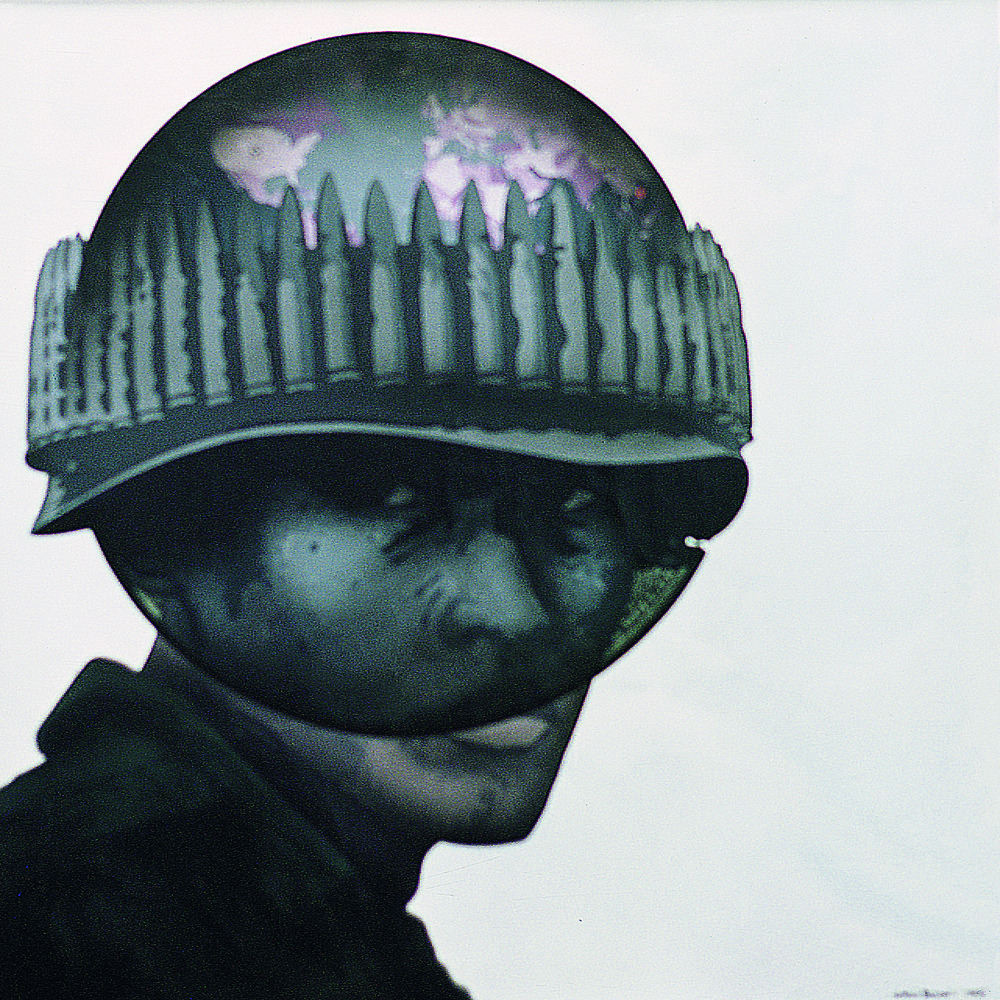A Vietnam la raó ha guanyat [reason has triumphed in Vietnam]
This work is part of “The Dollar” series and echoes some of the work covering the Vietnam War at the end of the previous decade. While the canvas expresses a certain optimism stemming from the end of the war, it still denounces injustice. That is because while Vietnam’s victory is, in the artist’s eyes, a triumph for reason, it does not end America’s world leadership although it does weaken it.
Yet one should not overlook the ironic title given to the work. Such irony is an “essentially Mediterranean dialectical instrument” and is so typical of the artist’s semantic strategy. This irony, in Manuel Vicent’s words, “lies between consciousness and analysis” and “implies the opposite of what is said.” War has nothing to do with true Reason (whatever the reasons for the conflict). One can only hope that Reason will finally prevail once the Armistice has been signed, such as in this case. America’s defeat in the conflict was to change the World Order in which the United States had held sway ever since the end of WWII.
Aguilera Cerni wrote that the work of Antoni Miró “acknowledges its historical context (its identification with its context and tensions) and wants to change the course of history towards more positive paths through awareness as an antithesis of alienation.” Antoni Miró’s work celebrates the war’s outcome and the end of so much horror, death and destruction. He does so by focusing on his anti-Yankee Imperialist sentiments and alludes to the perversion of structural economic dominance enforced by armed might. Unlike other of the artist’s works, it does not refer to the end of the Vietnamese People’s suffering but instead warns of the re-establishment of powerful global control structures.
The work combines both the general and the specific. The portrait of a soldier betokens individual suffering, and is combined with the depiction of a war-torn world. The overlay is achieved through transparencies. The veil applied to the helmet shows a geographical content that is obscured in the part of the globe covering the face. The colour range is very narrow: a palette of greys and browns is complemented with just a few magenta touches on the top. The work draws on and is contextualised by photo-journalism.
From a compositional standpoint, the two facial lines meet in the centre of the canvas, but most of the mass lies in the upper left quadrant, intensifying the tension towards this side, which leads the character’s sight.
The theme of Antoni Miró’s work during the 1970s was, as Arnau Puig put it, “the concrete reality of the fight against man’s oppression and a portrayal of the oppressed”. In Miró’s view, money was at the root of all such oppression. As this work clearly shows, the artist — as Floriano De Santi argued — felt that meaning not only lay in “documentary truth but also in the representation of grim events over which we have no control”. In other words, one needs to see the war’s end against the risk that it would drag on, with the battle being inevitably fought on another plane.
Santiago Pastor Vila
